Use your widget sidebars in the admin Design tab to change this little blurb here. Add the text widget to the Blurb Sidebar!
Posted: July 18th, 2010 | Author: jihoi.lee | Filed under: architecture, project, Uncategorized | Tags: architecture, Emergency, Guro, Guro Digital Complex, Guro Industrial Complex, Jihoi Lee, stairs | No Comments »
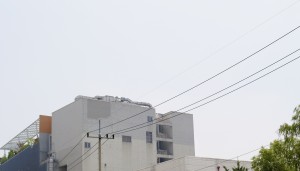
Recently I moved into a factory called Seoul Art Space_Geumcheon (they call it ê¸ˆì²œì˜ˆìˆ ê³µìž¥ in Korean, literally translated as Geumcheon Art Factory). It is an artist residency program located in Guro area – an aggregation of factories for heavy industries, which was part of the governmental urban planning during the 70′s. In the light of the IT industry, they started to call the Guro Industrial Complex to Guro Digital Complex and many visible shifts of the landscape began to ensue e.g. new skyscrapers, shopping malls, etc. Regardless of the struggles to refresh the atmosphere of the region by renaming it, reshaping it and even reprograming it in the name of Arts (like my residency space), the area doesn’t seem to easily get away from the impression of the Industrial region with poor factory workers.
There is an interesting anecdote I came across in the Postcapital lecture series at Total Museum, that this area had a very close relationship with rice price during the 70′s. Under the Park Chung-hee administration, the government hold the price of rice in order to shift the country’s major investment from the agriculture to Fordist industry. This led many farmers in bankruptcy, thus they naturally moved to Seoul especially to Guro to find a job in the newly opened factories. The unchanging rice price gave them a downside of losing their farms in the countryside, but also gave them an upside of surviving with the low wage they were getting from the factories. Some says that the government captured two rabbits – a Korean expression that means to say, in this perticular context, that they succeeded in both industrial shift and procuring the labour force who could work with unreasonable remuneration.
So here they are, some backdrop stories for one of projects that I’m working on at the moment in relation to the place that I became a resident of. While wandering around the area for site research, i remarked an architectural form that frequently captured my eyes – 비ìƒê³„단 Emergency Stairs in the factories.
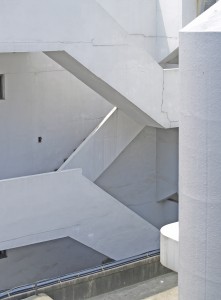
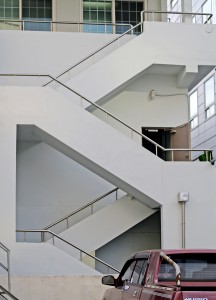
I was interested in its raison d’etre as a liminal space in between what is practically used and what is originally designed for, existing as a state of emergency that has yet to occur. Not to mention the fact that it is a space designed for vertical movements, I am intrigued by its calm representation of the probability of such actions. As I speculate further upon its brutalist aesthetics e.g. blunt concrete forms, parasite metal structure, ad hoc patches, etc. that is prevailed around the Guro factory buildings, I started to draw a scenario that led this kind of spacial adaptation in relation to the economic needs of the era. It might be a mimicry of Japanese architecture of the time that had conspicuous external stairs – I could still observe so many cases in Japan, that even led me to conceive a project about it in Tokyo. As Japanese heavy industry made great influence when developing the one in Korea during the 70′s, perhaps they followed similar paths in constructing infrastructure i.e. architectural condition that inhabited the dynamic of such business. Although it had left rather a low-fi version of what they mirrored.

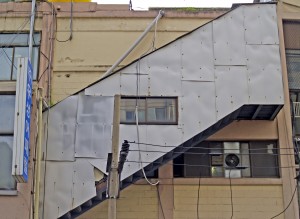

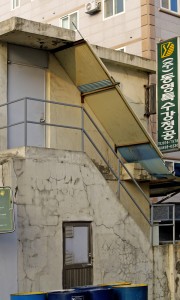
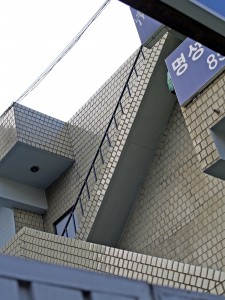
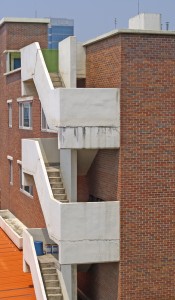
The external stairs started to hide inside the surface of buildings by the early 90′s. Thus the ones with external stairs also represent the state of building that is waiting for its death. Probably most of them are out in real estate auction.
This is work in progress, aiming at a rich taxonomy of architectural relics.
http://jihoilee.com
Posted: June 11th, 2010 | Author: nat | Filed under: Uncategorized | Tags: project | No Comments »
ë¯¼ì„ 4기 메가프로ì 트 시대를 ë˜ëŒì•„보다
[특집] ì˜ˆìˆ ê²½ì˜, 지ì—ì„ ì‚¬ê³ æ€è€ƒí•˜ë‹¤â‘ 메가프로ì 트
ë¼ë„삼 _ ì„œìš¸ì‹œì •ê°œë°œì—°êµ¬ì› ì—°êµ¬ìœ„ì›
ì´ì œ 마무리ë˜ê³ 있는 ë¯¼ì„ 4기를 특징짓는다면, ì•„ë§ˆë„ ê·¸ê²ƒì€ â€˜ë©”ê°€í”„ë¡œì íŠ¸ê¸°æœŸâ€™ë¼ í•´ë„ ê³¼ì–¸ì´ ì•„ë‹ ê²ƒì´ë‹¤. ì–´ëŠ ì‹œë„를 ë§‰ë¡ í•˜ê³ ëŒ€í˜• 프로ì 트가 펼ì³ì¡Œë‹¤. 서울ì—ì„ â€˜í•œê°•ë¥´ë„¤ìƒìŠ¤â€™ ‘남산르네ìƒìŠ¤â€™ ‘디ìžì¸ 서울’ 등과 ê°™ì€ ê±°ëŒ€í•œ 프로ì 트가 펼ì³ì¡Œê³ , ê²½ê¸°ë„ ë˜í•œ ‘경기êµì œë³´íŠ¸ì‡¼â€™ â€˜ìœ ë‹ˆë²„ì„¤ìŠ¤íŠœë””ì˜¤ ìœ ì¹˜â€™ì™€ ê°™ì€ ë¹… 프로ì 트가 ì´ì–´ì¡Œë‹¤. ì¸ì²œì€ ‘세계ë„ì‹œì¶•ì „â€™ì„ ê°œìµœí•˜ì˜€ê³ , 2012ë…„ 아시안게임 대회 ìœ ì¹˜ì— ì£¼ë ¥í•˜ì˜€ë‹¤. ì´ëŠ” 수ë„권ë¿ë§Œ 아니다. ì „êµ ëª¨ë“ ì§€ìžì²´ê°€ ê±°ì˜ í•´ë‹¹ë˜ëŠ” ë§ì´ë‹¤.
ë¯¼ì„ 4기가 ì´ì™€ ê°™ì€ ëŒ€í˜•í”„ë¡œì íŠ¸ì— ì§‘ì°©í•œ ë°ëŠ” 여러 가지 ì´ìœ ê°€ 있지만, ê·¸ 중 핵심ì ì¸ ì´ìœ 는 ë¯¼ì„ 3ê¸°ì˜ ì„±ê³¼ 때문ì´ë¼ê³ 보는 게 íƒ€ë‹¹í• ê²ƒì´ë‹¤. í˜„ìž¬ì˜ ëŒ€í†µë ¹ì¸ ë¯¼ì„ 3ê¸°ì˜ ì´ëª…ë°• ì„œìš¸ì‹œìž¥ì€ ê±°ì˜ ë¶ˆê°€ëŠ¥í• ê²ƒ ê°™ì€ ëª‡ ê°œì˜ í”„ë¡œì 트를 통해 ì„œìš¸ì— ë§Žì€ ë³€í™”ë¥¼ ê°€ì ¸ì™”ê³ , ê°œì¸ì ìœ¼ë¡œë„ ì„±ê³µí–ˆë‹¤. ‘서울광장 조성’ ‘ì²ê³„천 ë³µì›â€™ ‘서울숲 조성’ ‘대중êµí†µì²´ê³„ 개편’ ‘뉴타운 개발’ 등 그가 ì¼ê¶ˆë‚¸ êµµì§êµµì§í•œ ì„±ê³¼ë“¤ì€ ë†€ëž„ë§Œí•œ 것들ì´ë‹¤. ë•Œë¬¸ì— ë¯¼ì„ 4기는 ì´ ì˜í–¥ë ¥ì—ì„œ ìžìœ 로울 수 없었다. ë¯¼ì„ 3기가 그랬듯, ì ì–´ë„ 4ë…„ ì•ˆì— ëˆˆì— ë“œëŸ¬ë‚˜ëŠ” 특별한 성과를 창출해야 한다는 사실! 그로부터 ë¯¼ì„ 4기는 대형프로ì íŠ¸ì˜ ë°œêµ´ê³¼ 개발, 시행으로 들어간다. ì¼ë³¸ì´ 1990년대 ë¶ˆí™©ì„ ê·¹ë³µí•˜ëŠ” ì „ëžµìœ¼ë¡œ 대형프로ì 트를 추진하였다면, 우리는 ì •ì¹˜ì ì¸ ì„±ê³µê³¼ ê·¸ì— íž˜ìž…ì€ ë™ê¸°ì— ì˜í•´ 대형프로ì 트를 추진하기 시작한 것ì´ë‹¤.
ë¯¼ì„ 3기 ì •ì¹˜ì ì„±ê³µì´ ë™ë ¥
ì‹¤ìƒ ë°€ë ˆë‹ˆì—„ ì‹œê¸°ì— ë„ì‹œì í˜¹ì€ êµê°€ì ë‹¨ìœ„ì— ê¸°ì´ˆí•´ 추진ë˜ì—ˆë˜ ë…특한 대형프로ì íŠ¸ë“¤ì´ ë§Žë‹¤. ì˜êµì€ 런ë˜ì˜ 템즈강 ì£¼ë³€ì„ í˜ì‹ 하는 대형 ë°€ë ˆë‹ˆì—„ 프로ì 트를 ì¶”ì§„í•˜ì˜€ê³ , ê·¸ ê²°ê³¼ í…Œì´íŠ¸ 모ë˜ê³¼ ê°™ì€ ì„±ê³¼ë“¤ì„ ë‚³ì•˜ë‹¤. í”„ëž‘ìŠ¤ë„ íŒŒë¦¬ë¥¼ 개조하는 ‘그랑드 파리 프로ì 트’를 통해서 미테랑 ë„서관과 ê°™ì€ ì„±ê³¼ë¥¼ 낳았으며, 중소ë„ì‹œì˜€ë˜ ë¹Œë°”ì˜¤ë‚˜ 게ì´ì¸ 헤드 ë˜í•œ 구ê²í•˜ìž„ ë¯¸ìˆ ê´€ì˜ ìœ ì¹˜ì™€ 세ì´ì§€ ìŒì•…당, ìœ™í´ ì•„ì´ ë¸Œë¦¿ì§€, 발틱 ë¯¸ìˆ ê´€ 건립 ë“±ì„ í†µí•´ ë„시를 근본ì 으로 변화시켰다. ê·¸ë¦¬ê³ ì´ ë³€í™”ë“¤ì€ â€˜ì°½ì¡°ë„시’ë¼ëŠ” ì´ë¦„으로 세계ì 으로 브랜드화 ë˜ë©´ì„œ 새로운 프로ì 트를 설명하는 힘으로 작용하게 ëœë‹¤.
21세기 ì´ˆë°˜ì— ê¸°íšëœ ë§Žì€ í”„ë¡œì íŠ¸ë“¤ì€ ì´ì²˜ëŸ¼ ë°€ë ˆë‹ˆì—„ 프로ì íŠ¸ì— ì˜í–¥ì„ ë°›ì€ ì°½ì¡°ë„ì‹œì˜ ë„시재ìƒê³¼ 리모ë¸ë§, ê·¸ë¦¬ê³ ì´ì˜ 문화ì í™œìš©ì— ê´€ê³„ë˜ì–´ 있다. ê·¸ë¦¬ê³ ì´ëŸ¬í•œ 프로ì 트는 ì•„ì‹œì•„ì— ë„ìž…ë˜ë©° ë”ìš± ë” í°, 대형 프로ì 트로 ìžë¦¬ 잡는다. ì‚¬ë§‰ì„ â€˜ë¯¸ìˆ ê´€ ë„시’로 건립한 ì•„ë¶€ë‹¤ë¹„ì˜ ë°ì €íŠ¸ ë””ìžì¸ 프로ì 트(Desert Design Project)나 구룡반ë„ì— 15ê°œì˜ ë¬¸í™”ì‹œì„¤ì„ ì§‘ì 하는 í™ì½©ì˜ ì „ëžµ ë“±ì€ ëª¨ë‘ ê·¸ì™€ ê°™ì€ ëŒ€í‘œì 사례다. ì¼ë³¸ ë„ì¿„ë„ ë¡¯ë³¸ê¸°ë¥¼ 개발하는 프로ì 트를 ì¶”ì§„í–ˆê³ , 싱가í¬ë¥´ ë˜í•œ ì—스플러네ì´ë“œë¥¼ 조성하는 ë“±ì˜ ë§‰ëŒ€í•œ 프로ì 트를 추진한 ë°” 있다.
ì´ëŸ¬í•œ 대형 프로ì 트는 분명, ë„ì‹œ 브랜드 가치 ì œê³ ì— ì 지 ì•Šì€ íš¨ê³¼ì™€ 성과를 드러낸다. 최근 ìœ ëª…í•´ì§„ ë„ì‹œì¹˜ê³ ì´ëŸ° 대형 프로ì 트가 없는 사례는 없다. 실례로, ìŠ¤íŽ˜ì¸ ë™ë¶ë¶€ì˜ ìž‘ì€ íƒ„ê´‘ë„ì‹œì´ìž 바스í¬ë¶„리주ì˜ìžì˜ 테러ë„시로 ì•…ëª…ì„ ë–¨ì¹œ 빌바오는 ‘구ê²í•˜ìž„ ë¯¸ìˆ ê´€â€™ 하나로 스페ì¸ì˜ 핵심 문화창ì˜ë„시가 ë˜ì—ˆê³ , ì˜êµ 뉴ìºìŠ¬ ì˜†ì— ë¶™ì–´ 있는 ìžê·¸ë§ˆí•œ ë„ì‹œ ‘게ì´ì¸ 헤드’는 최근 뉴ìºìŠ¬ë³´ë‹¤ ë” ìœ ëª…í•œ ë„시가 ë˜ì—ˆë‹¤. ë”구나 í”„ëž‘ìŠ¤ì˜ ì•„ë¹„ë‡½ì´ë‚˜ 스페ì¸ì˜ 산페르민, ì˜êµì˜ ì—ë“ ë²„ëŸ¬ 등 ë¬¸í™”ì˜ˆìˆ ìƒí’ˆì„ 개발한 ë„시가 ìœ ëª…í•´ì§€ëŠ” 것과 ê°™ì´ ë¬¸í™”ì˜ˆìˆ ì´ ê°–ê³ ìžˆëŠ” 브랜드 창출 효과를 ê³ ë ¤í•œë‹¤ë©´, 최근 ë¬¸í™”ì˜ˆìˆ ì„ ê¸°ë°˜ìœ¼ë¡œ í•œ 대형 프로ì 트를 펼치는 ê²ƒì€ ë§¤ìš° 당연한 현ìƒì´ë¼ í•˜ê² ë‹¤.
다른 한편, ë¬¸í™”ì˜ˆìˆ ë¶„ì•¼ì˜ ì´ëŸ° 대형 프로ì 트는 ë„시를 í´ëŸ¬ìŠ¤í„°ì˜ 변방ì—ì„œ 중심으로 ì´ì „시키는 효과를 갖는다. ì‚¬ë§‰ì— ë‹¤ìˆ˜ì˜ ë¯¸ìˆ ê´€ë ¨ ì‹œì„¤ì„ ê±´ë¦½í•œ ì•„ë¶€ë‹¤ë¹„ì˜ ì „ëžµì€ ë£¨ë¸Œë¥´ë°•ë¬¼ê´€ì˜ ìœ ì¹˜ì™€ 예ì¼ëŒ€í•™ì˜ ìœ ì¹˜ ë“±ì— íž˜ìž…ì–´ 아부다비를 ì¸ì ‘í•œ ë‘ë°”ì´ ëª»ì§€ì•Šì€ ì°½ì¡°ì˜ ì¤‘ì‹¬ì§€, í´ëŸ¬ìŠ¤í„°ì˜ 핵심으로 만들었다. 중êµì„ 변화시킨 ‘다산즈’ ë˜í•œ 간단한(?) 프로ì 트를 통해 세계 ë‹¤ìˆ˜ì˜ ìžë³¸ì´ ë² ì´ì§•ì— 밀집하ë„ë¡ ë§Œë“¤ì—ˆê³ , ë„ì¿„ 롯본기 지ì—ì— ìƒˆë¡ê²Œ ìžë¦¬ìž¡ì€ ì‹ êµë¦½ë¯¸ìˆ ê´€, ì‚°í† ë¦¬ë¯¸ìˆ ê´€, ëª¨ë¦¬ë¯¸ìˆ ê´€ ë“±ì€ ì•„íŠ¸íŠ¸ë¼ì´ì•µê¸€ì„ 형성하며 주변 지ì—ì— ìˆ˜ë§Žì€ ê°¤ëŸ¬ë¦¬ë¥¼ 입주시켰다.
ë”불어 ì´ëŸ° ë¹… 프로ì 트는 시민ìƒí™œì—ë„ í° ì˜í–¥ì„ 미친다. 미처 ë¬¸í™”ì˜ˆìˆ ì— ê´€ì‹¬ì„ ê°–ê³ ìžˆì§€ ì•Šì•˜ë˜ ì‹œë¯¼ë“¤ì—게 ì˜ˆìˆ ì— ëŒ€í•œ 관심과 ì°½ì˜ì— 대한 새로운 ë™ê¸°ë¥¼ 부여하ë„ë¡ ë§Œë“ ë‹¤. ì˜ˆìˆ ì— ëŒ€í•œ ì²´í—˜ì´ ê±°ì˜ ì—†ë˜ ë¹Œë°”ì˜¤ì˜ ì£¼ë¯¼ë“¤ì€ êµ¬ê²í•˜ìž„ì˜ ë“±ìž¥ê³¼ ë”불어 60% ì´ìƒì˜ ì£¼ë¯¼ì´ ì˜ˆìˆ ì„ ì²´í—˜í•˜ê³ ê´€ëžŒí•˜ëŠ” 시민으로 바뀌었으며, 게ì´ì¸ í—¤ë“œì˜ ë°œí‹±ë¯¸ìˆ ê´€ì€ ì˜ˆìˆ êµìœ¡ì˜ 새로운 ê±°ì 으로서 뉴ìºìŠ¬ ì§€ë°©ì˜ ì‹œë¯¼ê¹Œì§€ë„ í¬ê´„í•˜ê³ ìžˆë‹¤. 요컨대 ë¹… 프로ì 트를 통해 í˜•ì„±ëœ ì„¸ê³„ì ê´€ì‹¬ì´ ì£¼ë¯¼ë“¤ì˜ ìžë¶€ì‹¬ìœ¼ë¡œ ì´ì–´ì ¸, 새로운 문화ìƒí™œì„ 창출하는 현ìƒìœ¼ë¡œê¹Œì§€ ì´ì–´ì§€ê³ 있는 것ì´ë‹¤.
메가프로ì 트, ê·¸ ìžì²´ê°€ ë¬¸ì œì¸ ê²ƒì´ ì•„ë‹ˆë¼
ë§Žì€ ì‚¬ëžŒë“¤ì€ ë¬¸í™”ë¥¼ ‘소프트’ë¼ê³ ë§í•˜ì§€ë§Œ, ì˜¤ížˆë ¤ 문화는 ‘환경ì ’ì´ë¼ê³ 보는 게 ë” íƒ€ë‹¹í•˜ë‹¤. 소프트야ë§ë¡œ ë¬¸í™”ì˜ ì¼ë©´ì´ë‹¤. 문화는 ì˜¤ížˆë ¤ 환경 ì†ì—ì„œ 만들어지는 í•˜ë‚˜ì˜ â€˜í˜„ìƒâ€™ì— 불과ì´ë©°, ë•Œë¬¸ì— í™˜ê²½ì„ ì–´ë–»ê²Œ ë§Œë“¤ê³ ì—°ì¶œí• ê²ƒì¸ê°€ì— (문화)ì •ì±…ì˜ ì´ˆì ì´ ëª¨ì•„ì ¸ì•¼ 한다. 그런 ì ì—ì„œ 대형 ë„ì‹œìž¬ìƒ í”„ë¡œì 트를 ì´ëŒë©° 새로운 문화í´ëŸ¬ìŠ¤í„°ë¥¼ 만들어내는, ë„시를 ìƒì§•í•˜ëŠ” ë¹… 프로ì 트야ë§ë¡œ ì‚¬ëžŒë“¤ì˜ ì¼ìƒì„ 바꾸는 ë™ì‹œì— ë¬¸í™”ì— ëŒ€í•œ 관심과 ì˜ˆìˆ í™œë™ì˜ ê¸°ë°˜ì„ í˜•ì„±í•˜ëŠ” 중요한 계기를 형성한다 í• ìˆ˜ 있다.
ì´ëŸ¬í•œ 대형 프로ì 트가 ìƒí™œê¶Œì˜ 문화를 위협한다는 비íŒì´ 없지 않지만, ê·¸ê²ƒì€ ê³¼ì •ê³¼ ê²°ê³¼ì˜ ë¬¸ì œì´ë‹¤. 대형 문화시설ì´ë‚˜ ì¸í”„ë¼ì˜ í™•ì¶©ì´ ë¬¸í™”ì— ëŒ€í•œ ê´€ì‹¬ì„ ìœ ë°œí•˜ê³ , ì¼ìƒìƒí™œ ë‚´ì—ì„œ ë¬¸í™”ì— ëŒ€í•œ 관심과 ì •ì±…ì„ ìœ ë°œí•˜ëŠ” 효과를 ë‚³ê¸°ë„ í•œë‹¤. 2002ë…„ ì›”ë“œì»µì˜ ê²°ê³¼ ì¼ìƒ ì†ì—ì„œ ì¶•ì œì™€ ë¬¸í™”ì— ëŒ€í•œ ê´€ì‹¬ì„ ë‚³ì•˜ê³ , ê·¸ 결과가 â€˜ì„œìš¸ê´‘ìž¥ì˜ ì¡°ì„±â€™ê³¼ ‘ì²ê³„천 ë³µì›â€™ìœ¼ë¡œ 나타났다. ê·¸ë¦¬ê³ ê·¸ íë¦„ì€ ë¹ˆê³µê°„ì˜ ë¬¸í™”ê³µê°„í™” ë° ê´‘í™”ë¬¸ê´‘ìž¥ì˜ ì¡°ì„±, 대형공ì›ì˜ 건립 등과 ê°™ì€ í™˜ê²½ê³¼ 문화를 기반으로 í•œ í…Œë§ˆì˜ ì°½ì¶œë¡œ ì´ì–´ì§€ê³ 있다.
메가ì´ë²¤íŠ¸ì˜ 근본ì ì¸ ë¬¸ì œëŠ” ì „ì²´ë¥¼ ê³ ë ¤í•˜ì§€ ì•Šê³ ì´ë²¤íŠ¸ì„±ìœ¼ë¡œ 치러지는 ëŒ€ê°€ì— ëŒ€í•œ 것ì´ë‹¤. 다시 ë§í•´ ë¹… 프로ì 트 ê·¸ ìžì²´ê°€ 아니ë¼, ê·¸ ë¹… 프로ì 트로 ì¸í•´ 만들어질 ì˜í–¥ë ¥ì´ ë” ë¬¸ì œë¼ëŠ” 것ì´ë‹¤. 만약 ì–´ëŠ ê³³ì— ëŒ€í˜•ì˜ ë¬¸í™”ì‹œì„¤ì´ í˜•ì„±ë˜ì—ˆë‹¤ë©´, 사회ì ìžì›ì€ ê·¸ íë¦„ì— ë”°ë¼ í˜ëŸ¬ê°€ê²Œ ë§ˆë ¨ì´ë‹¤. 예컨대 ì˜ˆìˆ ì˜ì „당 주변ì—는 현재 ë§Žì€ ì•…ê¸°ìƒë“¤ê³¼ 연습실로 ê°€ë“ ì°¨ 있다. 다른 한편 ì„¸ì¢…ë¬¸í™”íšŒê´€ë„ í•œë•Œ ìš°ë¦¬ë‚˜ë¼ ê³µì—°ì˜ˆìˆ ì˜ ì‚°ì‹¤ë¡œì„œ ì£¼ë³€ì— ë§Žì€ ë„¤íŠ¸ì›Œí¬-ì ì 시설들-를 í˜•ì„±í•˜ê³ ìžˆì—ˆë‹¤.
대형시설ì´ë‚˜ 랜드마í¬ì˜ ë“±ìž¥ì€ ì´ì²˜ëŸ¼ ì§€í˜•ì„ í”ë“ ë‹¤. ê·¸ë ‡ê¸° ë•Œë¬¸ì— ëŒ€í˜• 프로ì 트를 추진하기 ì „ì— ë¯¸ë¦¬ ì´ê²ƒì´ 만들어 낼 효과성-ë¬¸í™”ì§€í˜•ì˜ ë³€í™”-ì— ëŒ€í•´ 진단해야 한다. 그러나 ì–´ëŠ ëˆ„êµ¬ë„ ê·¸ë ‡ê²Œ 하지 않는다. ë•Œë¬¸ì— ë§‰ìƒ ì‹œì„¤ì´ ê±´ë¦½ë˜ì—ˆì„ ë•Œ 나 홀로 시설ì´ê±°ë‚˜, 대단히 성공하여 문화ìƒíƒœê³„ ìžì²´ë¥¼ ë’¤í”드는 매우 위험한(?) 결과를 ì°½ì¶œí•˜ê¸°ë„ í•œë‹¤. 100~300ì„ ê·¹ìž¥ì´ ë°€ì§‘ë˜ì–´ 있는 ëŒ€í•™ë¡œì— ëŒ€ê·œëª¨ ê·¹ìž¥ì„ ì§“ëŠ” 것ì€, 앞으로 ì´ê³³ì„ ìƒì—…ì 으로 ìœ¡ì„±í•˜ê² ë‹¤ëŠ” ì‹ í˜¸ë¥¼ 넣는 ê²ƒì— ë‹¤ë¦„ 아니다. ê·¸ë¦¬ê³ ì´ëŸ° 결과는 막아야 한다.
준비성 없는 ë¹… 프로ì 트는 모ë‘ê°€ 아는 매우 곤란한 ë¬¸ì œë¥¼ 야기한다. ê·¸ê²ƒì€ ì½˜í…ì¸ ì˜ ë¹ˆê³¤, 즉 만들기는 멋지게 ë§Œë“¤ì—ˆëŠ”ë° ì•ˆì— ë‚´ìš©ì´ ì—†ë‹¤ëŠ” 것ì´ë‹¤. ì´ ì ì€ ìš°ë¦¬ë‚˜ë¼ ì‹œì„¤ë“¤ì—ì„œ 곧잘 나타나는 í˜„ìƒ ì¤‘ 하나다. 대형 시설, 멋진 공연장ì´ë‚˜ ì „ì‹œìž¥ì„ ì§€ì—ˆìœ¼ë©´ ê±°ê¸°ì— ë„£ì„ ì½˜í…ì¸ ë¶€í„° ìƒê°í•´ì•¼ 한다. 그러기 위해서는 ì‚¬ì „ì— ë§Žì€ ì†Œìž¥í’ˆ(공연콘í…ì¸ )ì´ ìžˆë‹¤ë˜ê°€ 아니면, ë›°ì–´ë‚œ 기íšìžë‚˜ ìš´ì˜ì§„ì„ ê°€ì§€ê³ ìžˆì–´ì•¼ 한다. 그러나 ìš°ë¦¬ë‚˜ë¼ ê²½ìš°ì—” ë‚´ê°€ 아는 í•œ 그런 ê³³ì´ë¼ê³¤ 아무ë°ë„ 없다. 모ë‘ê°€ ì§€ì–´ë†“ê³ ë‚œ 다ìŒì— 굴러갈 것ì´ë¼ ìƒê°í•˜ëŠ” 것ì´ë‹¤. ë•Œë¬¸ì— ì„œìš¸ì‹œë¦½ë¯¸ìˆ ê´€ì— ëŒ€í•´ ‘한êµì¼ë³´ 분관’ì´ë¼ëŠ” ë§ì´ 나오는 것ì´ë‚˜, ìš°ë¦¬ì˜ ë¬¸í™”ìœ ì‚°ì„ ì „ì‹œí•œë‹¤ëŠ” êµë¦½ì¤‘ì•™ë°•ë¬¼ê´€ì´ â€˜ê·¸ë¦¬ìŠ¤ì „â€™ì„ ê¸°íší•˜ëŠ” ê²ƒì€ ì–´ì©Œë©´ ì •í•´ì§„ 수순 ì¤‘ì— í•˜ë‚˜ë‹¤.
ë¹… 프로ì 트가 ë§Œë“ ìµœí›„ì˜ ì ˆë§ì ì‚¬ì‹¤ì€ ë¹ˆê³¤í•œ 콘í…ì¸ ì—ë„ ë¶ˆêµ¬í•˜ê³ ë§Œë“¤ì—ˆìœ¼ë‹ˆê¹Œ ì´ìš©í•´ì•¼ 한다는 사실ì—ì„œ 비롯ë˜ëŠ”, ‘관’ 스스로 콘í…ì¸ ë§Œë“¤ê¸°ì— ìžˆë‹¤. ì„œìš¸ê´‘ìž¥ì„ ë§Œë“¤ì—ˆìœ¼ë‹ˆ ê³µì—°ì„ í•´ì•¼ê² ê³ , ê´‘í™”ë¬¸ê´‘ìž¥ì„ ë§Œë“¤ì—ˆìœ¼ë‹ˆ í”„ë¡œê·¸ëž¨ì´ ìžˆì–´ì•¼ í•œë‹¤ê³ ìƒê°í•œë‹¤! 사실 ì´ëŸ¬í•œ ë¬¸ì œë¡œ 만들어지는 ê³µê°„ì˜ ì •í˜•ì„±ê³¼ 경성화 현ìƒì´ë‹¤.
실로 í•˜ë‚˜ì˜ ê³µê°„ì´ íƒ„ìƒí•˜ë©´, ê·¸ ê³µê°„ì´ ìµìˆ™í•´ì§€ëŠ” ë°ëŠ” ì‹œê°„ì´ ê±¸ë¦°ë‹¤. ì‚¬ëžŒë“¤ì€ ê³µê°„ì„ ê¸°ì›ƒê±°ë¦¬ë©°, 기존형태로 ìš°ì„ ì´ìš©í•˜ë‹¤ê°€ ì ì°¨ ê·¸ ê³µê°„ì— ë§žëŠ” 프로그램과 ìš´ë™ì–‘ì‹, ê·¸ë¦¬ê³ ë¬¸í™”ì 형태를 만들어 낸다. 그러나 그러기엔 ì‹œê°„ì´ ì—†ë‹¤. ìš°ì„ ê³µê°„ì„ ë§Œë“¤ì–´ 놓았으니 ëë“ í•´ì•¼ê² ê³ , ê·¸ëŸ¬ë ¤ë©´ ê·¸ ê³µê°„ì„ ìš´ì˜í•˜ëŠ” í”„ë¡œê·¸ëž¨ì„ ì¡°ì„±ìžì¸ â€˜ê´€â€™ì´ ìŠ¤ìŠ¤ë¡œ ì§ ë‹¤. ê·¸ ê²°ê³¼ ê·¸ ê³µê°„ì— ìµìˆ™í•´ì§ˆ ì‹œê°„ì€ ì—†ë‹¤. 모ë‘ê°€ ê³µê°„ì˜ â€˜íƒ€ìžâ€™ê°€ ë˜ë©°, 주어진 í”„ë¡œê·¸ëž¨ì„ ì†Œë¹„í•˜ëŠ” ‘관람ìžâ€™ë¡œ ì „ëžµí•˜ê²Œ ëœë‹¤.
ì˜¤ëŠ˜ë‚ ë¹… 프로ì 트가 갖는 ìŠ¬í””ì€ ë°”ë¡œ ì´ì™€ ê´€ë ¨ë˜ì–´ 있다. ì´ ë•Œë¬¸ì— ìˆ˜ë§Žì€ ë…¼ëž€ì— íœ©ì‹¸ì´ê³ ì „ì‹œí–‰ì •ì´ë¼ëŠ” 비íŒì„ 받는다. ê·¸ê²ƒì€ ê°€ìž¥ 비참한 ê²°ë§ì´ê³ , 하지 ë§ì•„야 í• ì§“(!) 중 하나며, 프로ì 트 ìžì²´ì— 대한 ì‹ ë¢°ì„±ì„ ë–¨ì–´ëœ¨ë¦¬ëŠ” 결과를 낳는다. 그런ë°, 그런 ë¹… 프로ì 트가 ë„ˆë¬´ë„ ë§Žê³ , ëŒ€ë¶€ë¶„ì´ ë‹¤ ê·¸ë ‡ë‹¤.
새로운 ì •ì¹˜ 환경, ê³¼ì •ì˜ ì¤‘ìš”ì„± 부ê°ë˜ì–´ì•¼
불행하게ë„(?) ë¯¼ì„ 5기는 ë¯¼ì„ 4기와 ìƒë‹¹ížˆ 다른 분위기ì—ì„œ 출발한다. ì§€ë°©ì •ë¶€ 최초로 ‘여소야대’ë¼ëŠ” 새로운 ì •êµì´ 나타난 것ì´ë‹¤. ì¤‘ì•™ì •ë¶€ì™€ ê´‘ì—단체장, ê´‘ì—단체장과 기초단체장, 지ìžì²´ 단체장과 ì˜íšŒ ë“±ì˜ ê´€ê³„ì—ì„œ 지금까지 ë³¼ 수 ì—†ì—ˆë˜ ë§¤ìš° 다중ì ì¸ ê´€ê³„ê°€ ì „ê°œë 것ì´ë‹¤. 아마 ì´ ì ì€ ë¶„ëª… 기존과는 달리 대형 프로ì 트를 매우 ì–´ë µê²Œ 만들어 ê°ˆ 것ì´ë‹¤. 그간 별다른 비íŒê³¼ ê²€í† ì˜ ê³¼ì • ì—†ì´ ì¼ë°©ì â€˜ê²°ìž¬â€™ì— ì˜í•´ ë¹… 프로ì 트가 추진ë˜ì–´ 왔다면, ì´ì œëŠ” ì˜íšŒë‚˜ ì¤‘ì•™ì •ë¶€ì— ëŒ€í•œ 설ë“ê³¼ì •ì´ ì¡´ìž¬í• ê²ƒì´ê³ , 기초지ìžì²´ì™€ ê´‘ì—ìžì¹˜ë‹¨ì²´ ê°„ í˜‘ë ¥ì˜ ë¬¸ì œë¥¼ ì œê¸°í• ê²ƒì´ë‹¤. ì´ì œì•¼ë§ë¡œ ì •ì¹˜ë ¥ì´ ì—†ëŠ” ì§€ë°©ì •ë¶€ì˜ ì •ì¹˜ë ¥ì— ëŒ€í•œ ì‹¤í—˜ì´ íŽ¼ì³ì§ˆ 것ì´ë©°, ê·¸ ê²°ê³¼ ë§Žì€ í”„ë¡œì íŠ¸ë“¤ì€ ë¬¸ì œì œê¸° 단계ì—서부터 ë§Žì€ ë¹„íŒê³¼ í† ë¡ , ê²€í† ë¡œ ê·¸ ì •ì²´(identity)ê°€ 뿌리째 í”들리는 수모를 겪게 ë 것ì´ë‹¤.
ë¹… 프로ì 트를 추진하기 ì–´ë ¤ìš´ ì´ëŸ¬í•œ ì—¬ê±´ì€ ê¸ì •ì ì¸ê°€. ê¼ ê·¸ë ‡ì§€ë§Œì€ ì•Šë‹¤. ìš°ì„ ë¹… 프로ì íŠ¸ì˜ ì‹¤ì¢…ì€ â€˜ë¬¸í™”â€™ì— ëŒ€í•œ 관심 ìžì²´ë¥¼ ì €ì¡°í•˜ê²Œ 만들 수 있다. ê·¸ê²ƒì€ ë¬¸í™”ì •ì±…ì˜ ì†Œì™¸, 즉 ì˜ˆì‚°ì˜ ì¶•ì†Œì™€ ê°™ì€ ëª¨ìŠµìœ¼ë¡œ 현실화ëœë‹¤. ë”°ë¼ì„œ 보다 ë” ì „ëžµì 으로 â€˜ë¬¸í™”â€™ì— ëŒ€í•œ ê´€ì‹¬ì„ ìž‡ê³ , ì‹œë¯¼ë“¤ì˜ ì¼ìƒê³¼ ìƒí™œì„ ì½ëŠ” ì •ì±…ìœ¼ë¡œì˜ ì „í™˜ì„ ë§Œë“¤ì–´ê°€ì•¼ 한다.
ì‹¤ì œë¡œ 2007ë…„ ì´í›„ 최근 세계 ë¬¸í™”ì •ì±…ì˜ íë¦„ì„ ë³´ë©´, ë¹… 프로ì 트보다는 ì‹œë¯¼ë“¤ì˜ ì¼ìƒì„ ëŒë³´ëŠ” 방향으로 ì§„í™”í•˜ê³ ìžˆë‹¤. ë˜í•œ ê·¸ ë°©ì‹ë„ 거대한 ìžì—°ì— ì¸ê³µë¬¼ì„ 세우거나 노후한 ë„ì‹¬ì„ (재)ê°œë°œí•˜ê³ , 리모ë¸ë§í•˜ëŠ” ê²ƒì´ ì•„ë‹ˆë¼ ê·¸ ìžì²´ì˜ ê²½ê´€ì„ ì‚´ë¦¬ë©°, ìžì—°ìŠ¤ëŸ° 쉼터ì´ìž 문화ì 장(å ´)으로 활용하는 ë°©ì‹ìœ¼ë¡œ ë‚˜ì•„ê°€ê³ ìžˆë‹¤. ì¼íšŒì ì¸ ì‚¬ì—…ìœ¼ë¡œ 연출ë˜ëŠ” ë¹… 프로ì 트가 아니ë¼, 지ì†ì ì¸ í™œìš©ì„ í†µí•´ ê³µê°„ì„ ì—°ì¶œí•´ê°€ëŠ” 방향으로 ë°”ë€Œì–´ê°€ê³ ìžˆëŠ” 것ì´ë‹¤. ì˜ˆì „ê³¼ 다른 ì»¤ë®¤ë‹ˆí‹°ì„±ì˜ ì¡´ì¤‘ì´ë‚˜ ê³µê³µì˜ˆìˆ ì—ì„œ ì°¸ì—¬ì˜ˆìˆ ë¡œì˜ ì§„í™”ëŠ” ì´ì™€ ê°™ì€ ë³€í™”ë¥¼ 보여주는 예ì´ë‹¤.
ë•Œë¬¸ì— ì´ì ‘빅 프로ì 트 창출ìžâ€™ë¡œì„œì˜ â€˜ì‹ â€™ì´ ì•„ë‹ˆë¼, ‘빅 프로ì 트를 만들어가는 ê³¼ì •â€™ìœ¼ë¡œì„œ ‘ì¸ê°„â€™ì´ í•„ìš”í•˜ë‹¤. 그는 매우 ê°ˆë“±í•˜ê³ ê³ ë‡Œí•˜ë©°, 여러 사람들과 ë¶€ë”ªížˆê³ ì¶©ëŒí•˜ë©° 얘기를 만들어내야 한다. ê·¸ë¦¬ê³ ê·¸ 얘기 ê³¼ì •ì„ ê³µê°„ì— ìž…íž˜ìœ¼ë¡œì¨ ì´ì•¼ê¸°(story)를 ë§Œë“¤ê³ , ê·¸ ìŠ¤í† ë¦¬ê°€ ‘스스로’ 얘기하ë„ë¡(telling) 만들어내야 한다. 바로 ê³µê°„ì„ ë§Œë“¤ì–´ê°€ëŠ” ì „ëžµì êµê°, 예비ì 프로ì 트, 다양한 사람들과 행하는 소통, ì „ëžµì ì¸ ì‹¤í—˜ ë“±ì´ í•„ìš”í•œ 것ì´ë‹¤.
ê³µê°„ì„ ë§Œë“¤ë ¤ 하지 마ë¼. ‘빅 프로ì 트’가 아니ë¼, ê³µê°„ì´ ìŠ¤ìŠ¤ë¡œ 만들어가는 ë³€ì´ë¥¼ ì¦ê¸°ëŠ” 지혜가 필요하다. ê±°ê¸°ì— ë§Žì€ ì‚¬ëžŒë“¤ì´ ë‹¿ê³ , ì˜ˆìˆ ê°€ì˜ ë•Œì™€ í”ì ì„ ë¬»ížˆë©°, ê±´ì¶•ê°€ì˜ ìƒìƒê³¼ ìš´ì˜ì§„ì˜ ì§€í˜œë¥¼ 불어넣어야 한다. â€˜ì‹ â€™ì€ ìš°ë¦¬ë¥¼ 만들었다. 그러나 우리는 â€˜ì‹ â€™ì˜ ëœ»ëŒ€ë¡œ ì ˆëŒ€ë¡œ 살지 않는다. 그처럼 공간 ë˜í•œ â€˜ì‹ â€™-ë¹… 프로ì í„°-ì˜ ëœ»ëŒ€ë¡œ 살지 않는다. ê·¸ê²ƒì€ ë‹¤ë§Œ, 관계하는 ì‚¬ëžŒì— ë”°ë¼ ë‹¬ë¼ì§ˆ ë¿ì´ë‹¤. ê·¸ 달ë¼ì§ì„ 어떻게 하면 í¬ê²Œ 만들 것ì¸ê°€? ê·¸ê²ƒì´ ìš°ë¦¬ì—게 주어진, 지난 몇 ë…„ê°„ì˜ ë¹… 프로ì 트 시대ì—ì„œ ì–»ì€ ê°’ë¹„ì‹¼ ìˆ˜ì—…ë£Œì˜ ê²°ê³¼ì¼ ê²ƒì´ë‹¤.
——————————————————————————–
í•„ìžì†Œê°œ
ë¼ë„ì‚¼ì€ ì¤‘ì•™ëŒ€í•™êµ ëŒ€í•™ì›ì—ì„œ ì‹ ë¬¸í•™ 박사학위를 ë°›ì•˜ê³ , 2001년부터 ì„œìš¸ì‹œì •ê°œë°œì—°êµ¬ì› ì—°êµ¬ìœ„ì›ìœ¼ë¡œì„œ ë¬¸í™”ì •ì±…ê³¼ ë„시문화 ë“±ì— ê´€í•œ 연구를 지ì†í•´ ì˜¤ê³ ìžˆë‹¤. ì €ì„œë¡œ 『ì¸í„°ë„·ê³¼ 커뮤니케ì´ì…˜ã€(한울출íŒì‚¬, 2000), 『블랙ì¸í„°ë„·ã€(ìžìš°ì¶œíŒì‚¬, 2002) ë“±ì´ ìžˆë‹¤.
http://www.gokams.or.kr/webzine/main.asp?sub_num=46&pageNo=1&state=view&idx=499
Posted: March 10th, 2010 | Author: nat | Filed under: Uncategorized | No Comments »

Posted: March 10th, 2010 | Author: nat | Filed under: Uncategorized | No Comments »
Â
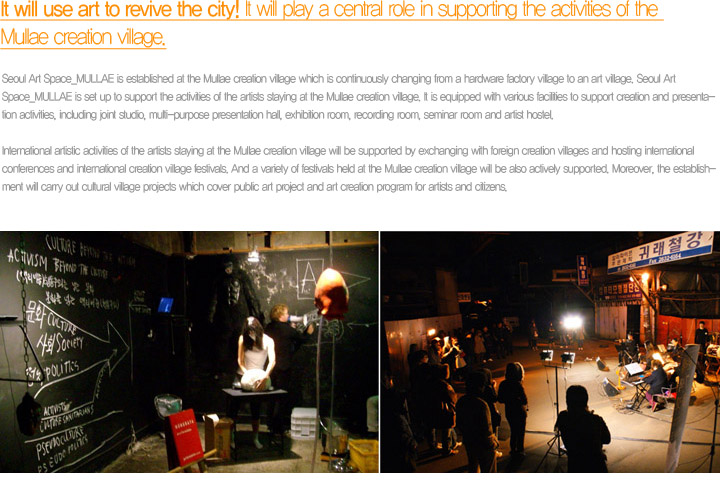

Posted: March 10th, 2010 | Author: nat | Filed under: Uncategorized | No Comments »
Posted: March 10th, 2010 | Author: nat | Filed under: Uncategorized | No Comments »

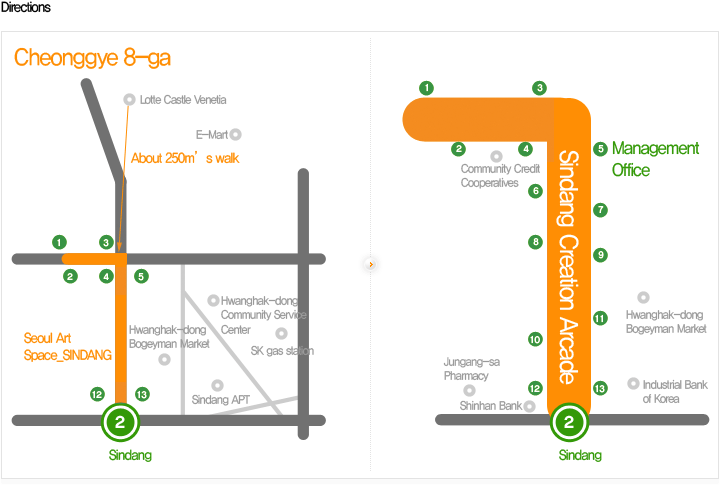
Posted: March 10th, 2010 | Author: nat | Filed under: Uncategorized | No Comments »

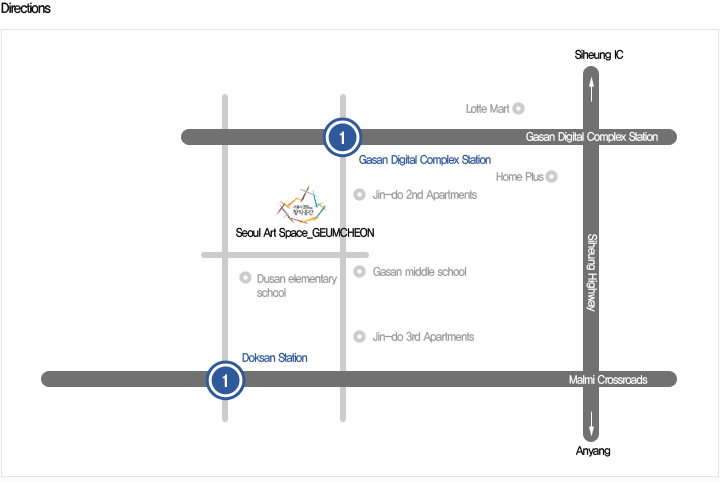
Posted: March 10th, 2010 | Author: nat | Filed under: Uncategorized | Tags: seoul art space seogyo | No Comments »

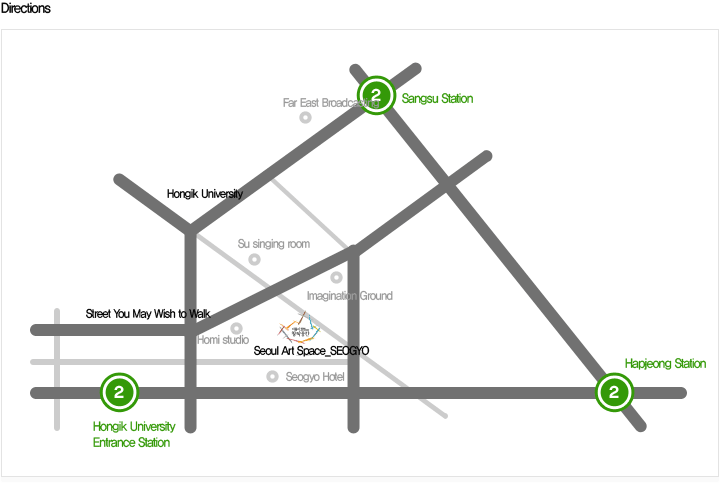
Posted: March 5th, 2010 | Author: nat | Filed under: Uncategorized | Tags: seoul pristine stream cheonggyecheon history | 1 Comment »
 History

The Cheonggyecheon used to be a naturally formed stream before the Joseon Dynasty designated Seoul as its capital. As the city had always been surrounded by mountains, its water was flowing into downtown. Because of the influence of the monsoon weather, it was dried in spring and fall, and warm and humid in summer.
Thus, the stream remained dry in fall and spring, but was likely to get flooded during rainy days in summer. There were many houses and shops along the stream flowing across downtown. On many occasions, heavy rain in summertime caused flood, with houses getting inundated and bridges getting damaged, and many casualties.
Thus, the Joseon Dynasty rulers attached a particular importance in the construction of a drainage system as part of the refurbishment project for the city. During the reign of King Taejong, the third king of the Joseon Dynasty, the work for overhauling the Cheonggyecheon was on his first priorities. The work, which had been carried out for two years from 1406, included dredging and bolstering the banks on both sides of the stream.
In 1411, a temporary authority named “Gaecheondogam” was set up to take care of the task of overhauling the stream. Early in the following year, work was carried out on a large scale for a month, involving a total of 52,800 men per day. The work included stone embankment for the mainstream and building up some stone bridges like Gwangtonggyo and Hyejeonggyo.
During the reign of King Taejong, overhauling the main stream had been the main focus. In contrast, a lot of efforts had been made to overhaul tributaries and streamlets during the reign of King Sejong, the fourth king of the dynasty, to prevent floods in downtown Seoul.
In 1441, an underwater column (called Supyo in Korean), marked with notches, was set up in the west side of Majeongyo (Bridge) to measure the water level in an effort against floods.
During the reign of King Sejong, the Cheonggyecheon was recognized as an important achievement for people’s everyday life. When Seoul was designated as the capital of the Joseon Dynasty, the theory of the configuration of the ground (“Pungsu” in Korean) came to birth: the Hangang (River) flowed from east to west along the outer boundary, while the Cheonggyecheon flowed from west to east into downtown.
At that time, there were no particular drainage systems. Thus, trash and wastewater flowed into the Cheonggyecheon in downtown Seoul. There were some officials insisting on the importance of the stream relying on the theory of the configuration of the ground and thus it should remain clean, while some others were supporting a more realistic opinion supporting the idea of the stream as a drain for people. King Sejong leaned to the latter’s opinion. Thus, the stream came to act as drainage for people living in Seoul.
King Yeongjo, the 21st king of the Joseon Dynasty, was the one who put the biggest efforts into the overhauling of the stream in the post-King Sejong period.
It appeared that King Yeongjo was willing to get remembered as a great king taking care of the need for overhauling the stream, like Yu the Great of the Xia Dynasty and King Yangdi of the Sui Dynasty of China, who used to get to be known for their greatest achievements in improving dramatically the management of the river along with their flood control projects.
For about half a century and until King Yeongjo came to the throne, after the changes made by Kings Taejong and Sejong, the stream saw no drastic change. Its capability remained sufficient to carry out household wastewaters from around 100,000 Seoulites.
However, the situation changed during the 17th and 18th Centuries. After the Japanese invasion in 1592 and the Manchu War in 1636, the population of Seoul greatly increased with people swarming from every part o the nation: from 80,000 people in 1657 to 190,000 in 1669. Under such circumstances, the amount of wastewaters increased to an extent that could not get covered by
the existing stream.
The situation got even worse since people who had newly moved to Seoul cultivated vegetables on every single space on both sides of the stream, causing some big drainage issues.
They were also using a lot of trees from the mountains as the main source of heat. Earth and sand coming from the bare mountains surrounding Seoul came to fill up the stream.
By 1725, when King Yeongjo came to the throne, the Cheonggyecheon was filled up by the ground and the sand swept from the mountains. The king established
“Juncheonsa (an office in charge of dredging streams)” in October 1759 after analyzing the situation on several
occasions.
The newly established office started with its dredging work in February 1760, dividing the main stream and its tributaries into a total of eight zones and fixing the damaged bridges. The work included overhauling
water channels in all royal palaces.
The work continued for 57 days, mobilizing a total of 200,000 men per day. In June 1773, retaining walls were made on both sides of the Cheonggyecheon, and curved courses became straight ones, with the work carried out in three different sectors.
During the Japanese colonial period, the Cheonggyecheon went through some changes different from those made in the past. First of all, it came to get called “Cheonggye” as it is called today, supposedly from 1914, when the colonialists rearranged stream names in Korea.
In the past five centuries during the Joseon Dynasty, it was just called “Gaecheon (meaning a stream).” Looking at the newspapers published during that time, the name “Gaecheon” rarely appeared from about 1916, apparently giving its way to the “Cheonggyecheon.”
The stream used to be the border between Bukchon and Namchon of the capital during the Joseon Dynasty. During the Japanese colonial period, the stream came to act as the border between Jongno regarded as the street for Koreans and Honmachi (referring to present Chungmuro), a Japanese town. The Japanese colonialists nicknamed the stream Dirty Stream by derision, instead of Cheonggyecheon (literally meaning a “Clean Stream”).
From around 1918, the colonialists started overhauling the stream in connection with their plan to establish the central institutions to rule the colony, including Joseon Government-General, north of the stream.
In the post-1920s period, the colonialists announced their plans to cover up the stream on several occasions, including one announced in 1926 to form a 10,000-pyeong (= 8 acre) housing site, one announced in 1935 to build up a road and an elevated railroad, one announced in 1939 regarding exclusively cars, and one announced in 1940 to build up a streetcar path along with a subway. Such plans were intended to solidify the colonial rule over Korea and develop Seoul as a supply base for the wars that the colonialists were waging against the U.S. and China, including the Pacific War.
However, with the exception of the Taepyeongno-Mugyodong section, which had been covered up in 1937, all those plans could never come true due to the lack of financial resources. The work for overhauling the stream caused many changes to the structures though. Due to the installation of a streetcar path nearby, Gwangtonggyo(Bridge) had been reinforced and expanded.
Next to the abutment of the bridge, sewage pipes exceeding 1 meter in diameter were buried. In 1908, Ogansumun, a landmark penstock, was completely dismantled to give its way to a bridge and a street. Several bridges, including Haranggyo and Yeongdogyo, were rebuilt.
By 1945, when the nation was liberated from the Japanese colonial rules, the Cheonggyecheon was filled up with trash,
ground and sand swept from the bare mountains and severely contaminated with wastes from shabby makeshift houses built alongside. After the Korean War (1950~1953), even more people swarmed into Seoul to find their way and make their living and settled down along the stream.
Those living in houses near the stream suffered a lot due to the stench caused by the large amount of wastes flowing into the stream. Thus, the image of Seoul had also been severely affected.
It appeared that the handiest way to put an end to the multitude of shabby, makeshift houses and the dirty smell was to cover up the
stream with concrete. Finally, the work to cover it up with concrete
started as quickly as possible by August 1958, with the 136m section
near Gwangtonggyo completed in 1955 ahead of the remaining
sections.
In addition, a 5.6 km-long, 16 m-wide elevated highway extending
from Gwanggyo to Majang-dong was completed over the stream in
August 1971 after four working years. Thus, all makeshift houses
along the stream were demolished, freeing the place for some modern
commercial buildings.
A multitude of large and small tool, lighting, shoes, clothes, secondhand book stores were opened one after another along the concrete-covered stream, attracting some endless lines of customers. Every day there were hundreds of thousands of vehicles passing through the covered stream and the elevated highway. The area eventually became the busiest and noisiest sector in Seoul. No other area in Seoul can reflect the city’s history of the past half-century better than the Cheonggycheon area, though.
By the end of the 1950s, it became a symbol of poverty and slovenliness, being filled up with trash and wastes. During the 1960s and 1970s, it was regarded as an example of successful industrialization and modernization. Then, in the 1980s and 1990s, it came to be regarded as a source of intense traffic, health and environmental issues.

Text by http://www.sisul.or.kr/grobal/cheonggye/eng/WebContent/index.html




















